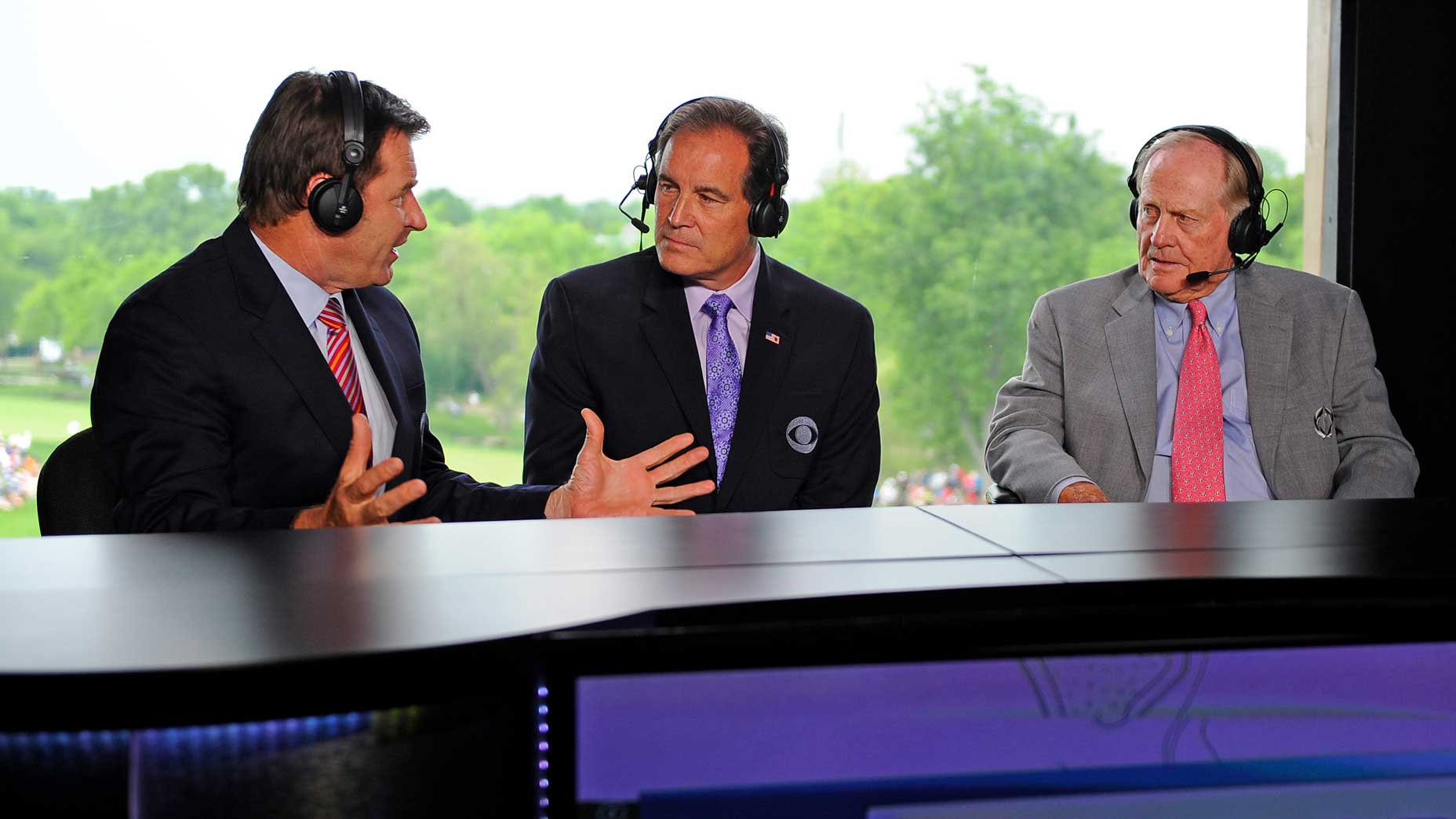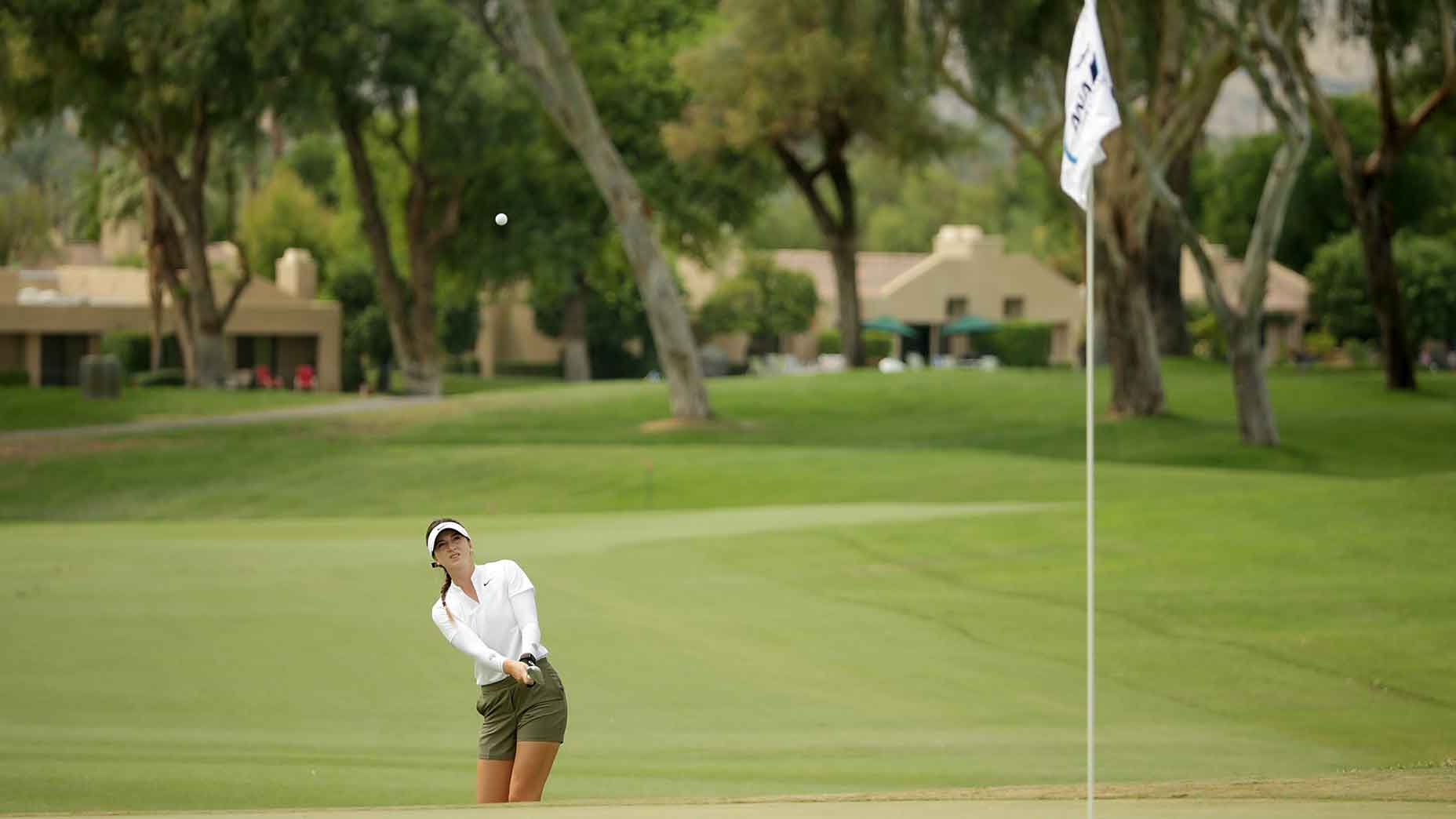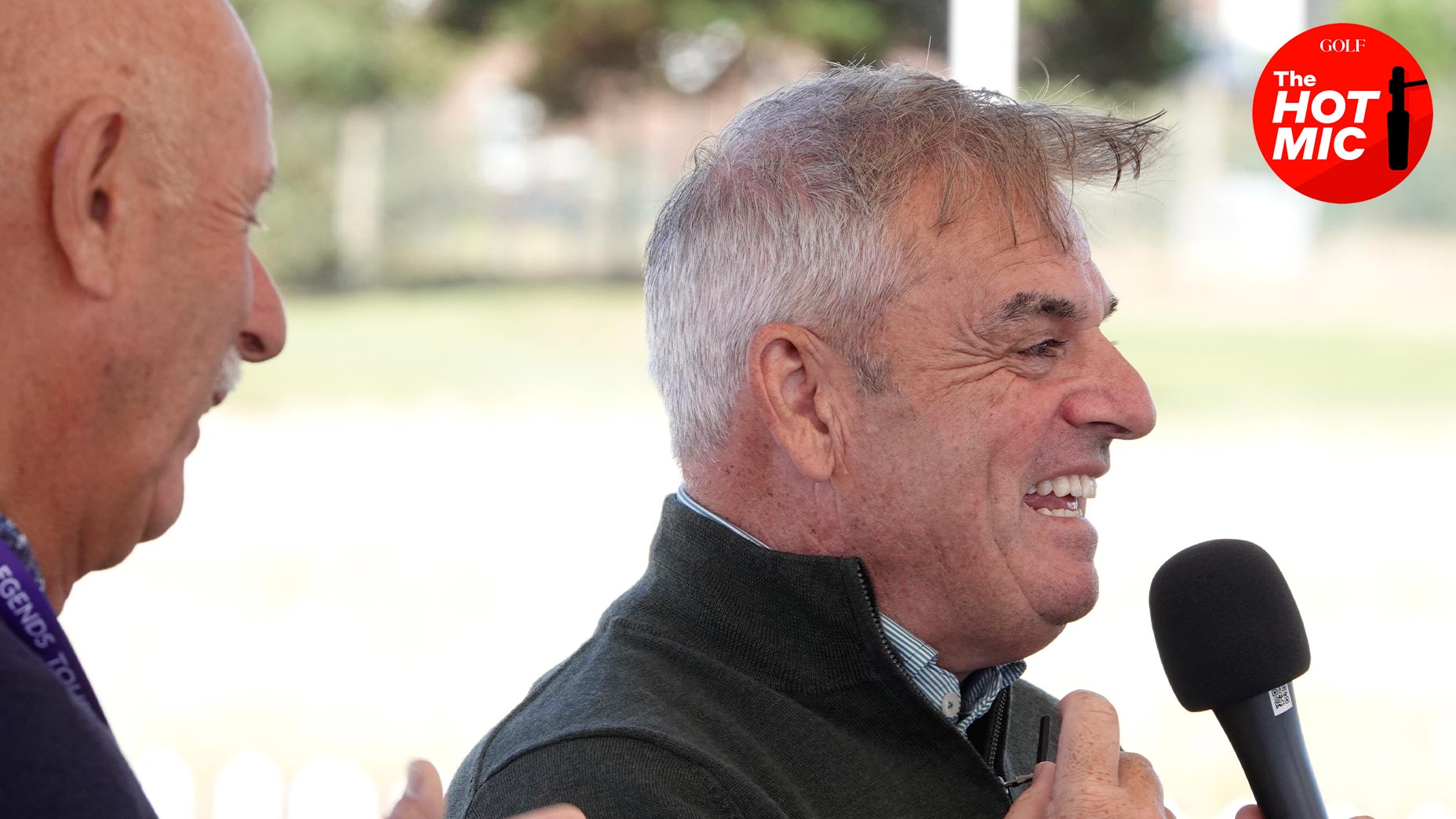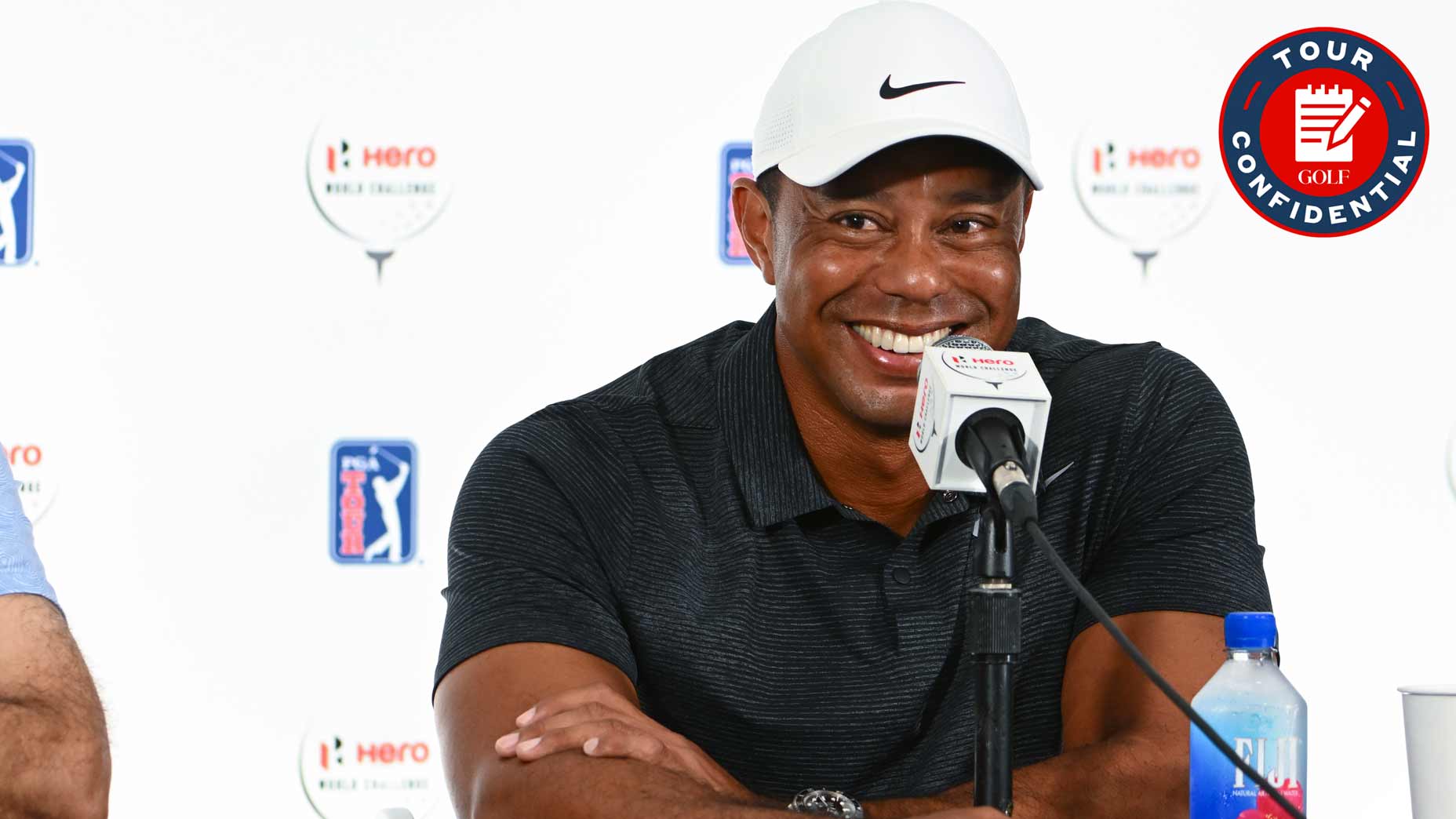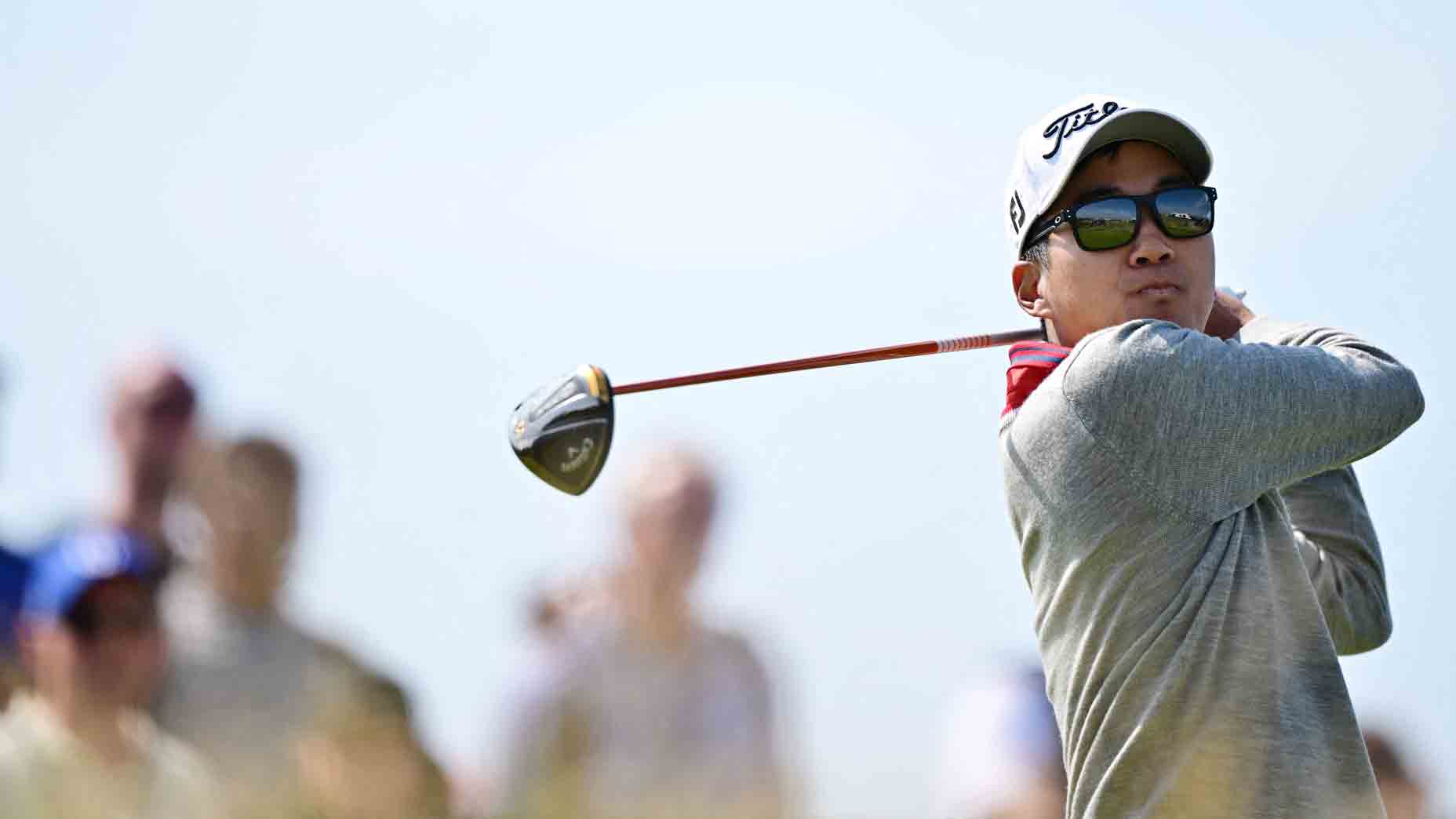
Michael Kim in July at the Open Championship.
Getty Images
Michael Kim screen-shot the 13th hole at TPC River Highlands, drew in a blue ‘L’ and a red ‘T,’ wrote a few words and posted it all to the site formerly known as Twitter. All of it, presumably, took a few minutes.
But the return was great. In the process, the PGA Tour pro:
— Opened up a debate likely as old as golf itself.
— Got a former Ryder Cup captain, along with a few others, to agree with him.
— Got other folks to say otherwise. After all, Jack Nicklaus once said as much.
— Livened things up on a late November Saturday afternoon. As of a day later, his post had captured a whopping 1.1 million views.
Not bad.
As for the subject?
Playing with trouble — which Kim wrote you shouldn’t shy away from on a hole. Which, of course, would also mean that you shouldn’t always play away from it.
Let’s start here with Kim, who’s become a must-follow in the golf Twitter world. In his post, he used the 13th at TPC River Highlands as an example. The double dogleg hole — first right, then left — has water along most of the right side of the fairway, and Kim marked that with the red “T.”
He then placed the blue “L” just to the left of the trouble. That where he hoped his right-to-left tee shot would drop.
Here was his rationale:
“Don’t always just aim to the other side of the trouble,” Kim wrote. “That is often tougher because you know you can’t miss it to the side with the trouble but you also don’t have room to the side ur aiming at. If there’s trouble on the right, more times than not, I’ll aim pretty close to the water and if anything overdo my draw and I’ll have most of the fairway to play with.
“For ex. Hole 13 at travelers. I’ll aim at the Red T and try to end up on the blue L.
“Try it out next time ur on the range. Make ur own fairway, pick a side with water, aim it near the water and curve it away from the water.”
Here, you probably have one thought. Kim knew it, too. He added a follow-up post.
“I’m WELL aware that many of you struggle to curve it on command,” he said. “That’s why I put try it on the range first.”
Fair enough. And the comments came. Including one from Padraig Harrington, a three-time major winner and the 2021 European Ryder Cup captain.
He agreed with Kim.
“Michael is so right here,” wrote Harrington, who’s also been a great sharer of golf knowledge over social media. “Go on to the course when it’s quiet and try both options, if possible with a number of balls/clubs and see what works for you. I know in the above scenario if I’m aiming left away from the water I often swing with the unintentional thought of don’t go right. Aiming left,trying not to go right will always end to far left( doublecross) At least aiming right and then trying not to hit it right ends up left of water and maybe still in fairway. Clearly what ever target you pick, if you execute it with perfect mental focus it is good too.”
And more comments came. You probably have a few just while reading this.
It’s here, though, where we’ll revisit a moment from last year’s Memorial — where Nicklaus, the tournament’s host, and Nick Faldo, the then-head analyst for CBS, had the same conversation.
In short, Faldo also said you should play toward trouble. And Nicklaus disagreed.
Here’s what this author wrote at the time:
…
The conversation started with Billy Horschel — who leads by five heading into Sunday — on the tee on the 186-yard, par-3 16th at Muirfield Village. His pin was cut 12 feet in on the green’s left side (and 39 feet in from the front), and a few yards left of the hole was a lake. In question, essentially, was whether Horschel, who’s right-handed, should flirt with the water and try to get in close. Or play away from trouble.
Jack?
“I would be playing right at the middle of the green,” said Nicklaus, the tournament’s host and the course’s founder. “I would let the ball turn a little bit left. But I don’t think you should be playing left to right in there.”
“Why wouldn’t you fade it in there, Jack?” asked Faldo, now an analyst with CBS. “I would think that’s the hold-off. One-yard fade.”
“I don’t ever aim the ball into trouble,” Nicklaus said. “Period.”
“Don’t ever aim the ball at the trouble,” Faldo said.
“Don’t ever aim the ball at trouble,” Nicklaus said. “Don’t ever aim the ball at out of bounds. Don’t ever aim the ball at a lake. You always aim away from it. And if you have to play back towards it, make sure that you can’t hook it enough to get there or make sure you can’t fade it enough to get to it.”
Said analyst Frank Nobilo: “This is a good discussion. There’s 24 majors up there.”
Indeed. At this point, announcer Jim Nantz asked Faldo if he ever aimed at trouble.
“Mr. [Ben] Hogan said you aimed at the trouble and then worked it off the trouble,” Faldo said. “Like you’d aim it at the lake and fade it off it.”
“If you were sure you were going to do that,” Nicklaus said.
“Yeah, if you trust your …” Faldo began.
“And that’s what I did,” Nicklaus said. “I thought I was pretty good at what I did, but I didn’t trust it that much.”
“You could have done a lot better than those 19 seconds,” joked Faldo, a reference to Nicklaus’ number of runner-up finishes in majors.
“Yeah, I know,” Nicklaus said. “That’s when I aimed at the trouble.”
“So you’d work it with no fear of overdoing it? You never flew it over?” Faldo said.
“What I tried to do was not ever put pressure or make myself nervous,” Nicklaus said. “I tried to keep comfortable.”
***
All good stuff.
So, who’s right?
Here’s saying everyone.
We’ll take the easy way out here, but it’s perhaps the right one. Really, it’s a matter of preference. It takes courage to look danger in the eye. And skill, as Kim noted.
But there’s a potential payout in doing so.
All this thanks to some words and a picture. Who knew?



